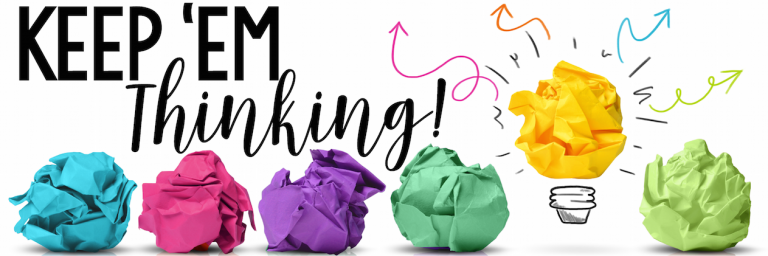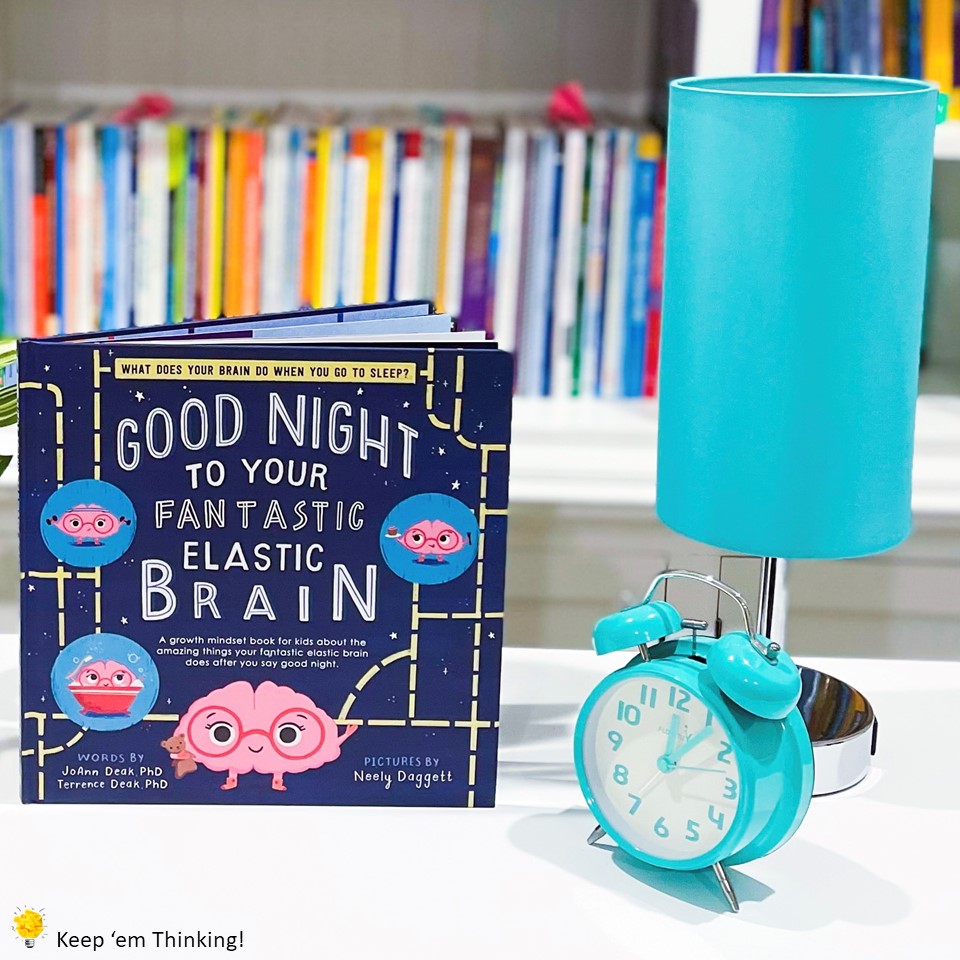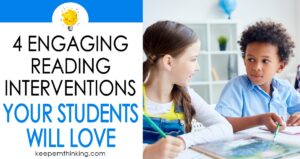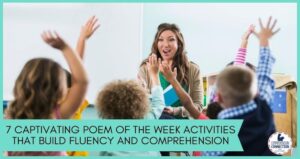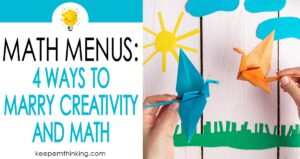If you’ve ever observed a child’s sense of wonder, you’d know just how incredibly eager they are to discover the world around them. From the moment they take their first steps, children embark on a journey of constant learning and exploration. And what’s at the heart of all this curiosity? Their remarkable brain!
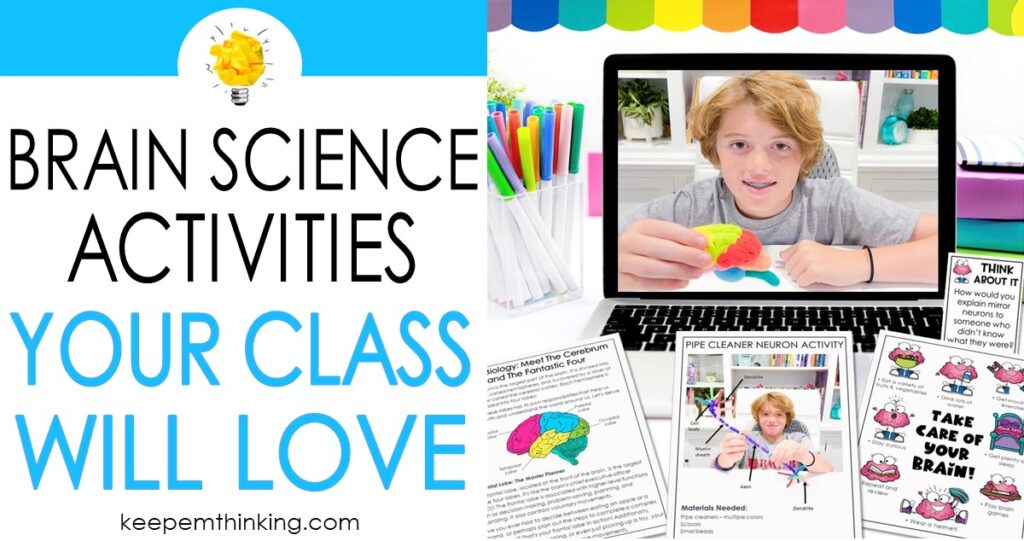
In this blog post, we’ll explore ten exciting and fun activities that can help your students learn about their brains in engaging and interactive ways. From creating models of the brain to writing raps about its different parts, these brain science activities for kids will spark interest and curiosity about their brain. They’ll provide hands-on learning experiences to help kids grasp how their brains grow, change, and function.

Why Teach Brain Science For Kids?
Demystifying Learning: When children understand that their brains are responsible for their learning, they can make sense of their experiences. They can connect their efforts in learning to the physical changes happening in their brain. This understanding of elementary brain science removes the magic from learning and makes it a real, tangible process that they can influence.
Promoting Self-Understanding: Teaching children about their brains helps them recognize their thoughts, emotions, and behaviors. This understanding allows them to manage their emotions better, increase their concentration, and improve their learning outcomes. It’s the first step toward self-awareness and self-regulation.
Boosting Motivation and Engagement: When children understand the science of how their brain works, it can increase their interest in learning and help them understand the importance of perseverance, curiosity, and a positive mindset.

Content for a Brain Unit in Elementary Grades
Designing an engaging and age-appropriate unit on brain science for kids can seem challenging. The key is to break down complex concepts into smaller, digestible parts and use plenty of visuals and hands-on activities. Here are some essential topics to include in your brain unit:
LESSON 1: The Difference Between the Brain and the Mind
Kids often think their brain and mind are the same. I like to use the illustration of being able to put your brain in a jar because it is a tangible thing, but the mind is not tangible. Although the brain and the mind are not interchangeable, they do work together.

LESSON 2: The Basic Structure and Functions of the Brain
When teaching brain science for kids, you need to begin with the basics. Teach children about the different parts of the brain, like the cerebrum, cerebellum, and brainstem, and their respective roles. Use models or illustrations to make it visually appealing and easier to understand.
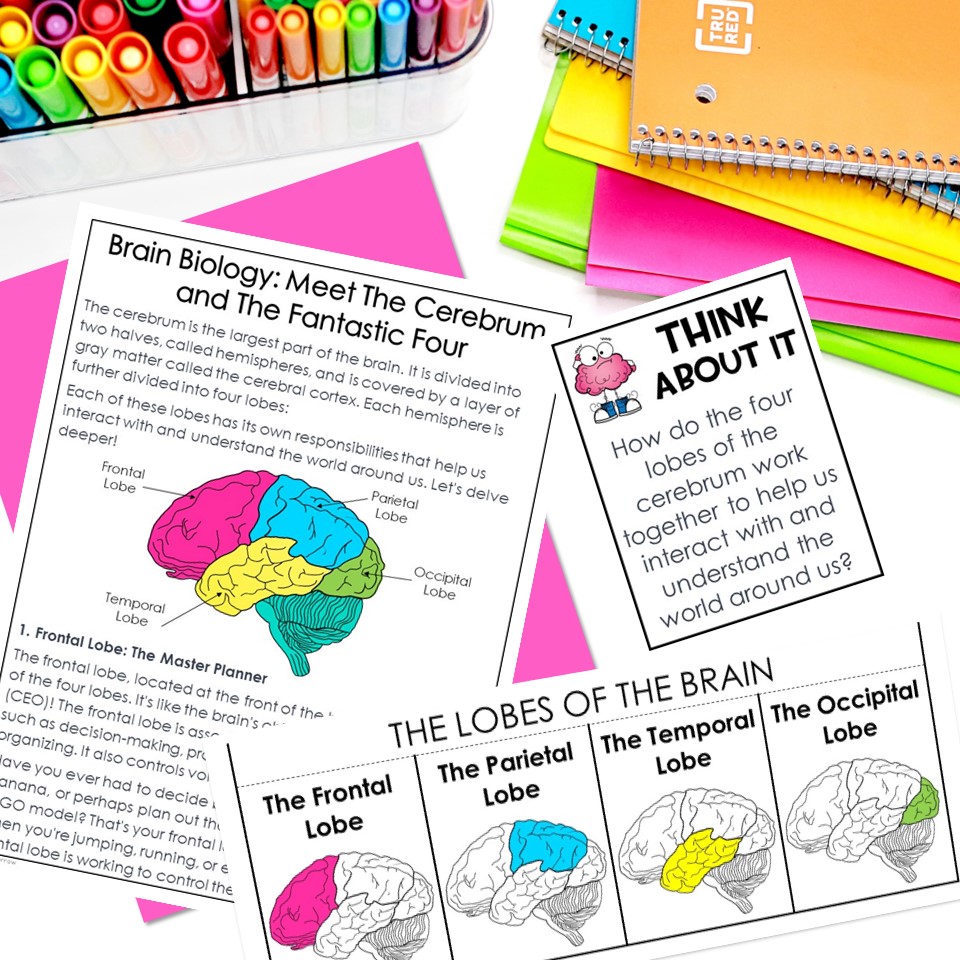
LESSON 3: Neurons – The Brain’s Messengers
When introducing neurons, it’s best to use simple and relatable concepts. Imagine explaining to them that our brain is like a giant puzzle made up of over 100 billion tiny pieces called “neurons.” These neurons are like messengers that love to chat with each other. Every thought we have, every move we make, and every feeling we experience is because these neurons are passing messages back and forth at lightning speed.
By making models of neurons, you can illustrate how these neurons look with their long arms, called “dendrites” and “axons,” reaching out to talk to their neighboring neurons. Just like how kids in a classroom pass notes to each other, neurons use electrical and chemical signals to share information.

LESSON 4: Mirror Neurons
Mirror neurons are like the brain’s built-in copycats. When we see someone doing something, like laughing or crying, our mirror neurons fire up almost as if we were doing that action ourselves. It’s like when we see someone yawn, and suddenly, we feel the urge to yawn too!
These neurons help us understand and feel what others are going through. They’re a big part of why we can “put ourselves in someone else’s shoes” and feel empathy. Mirror neurons can teach children the significance of kindness, understanding, and connection in our everyday interactions..
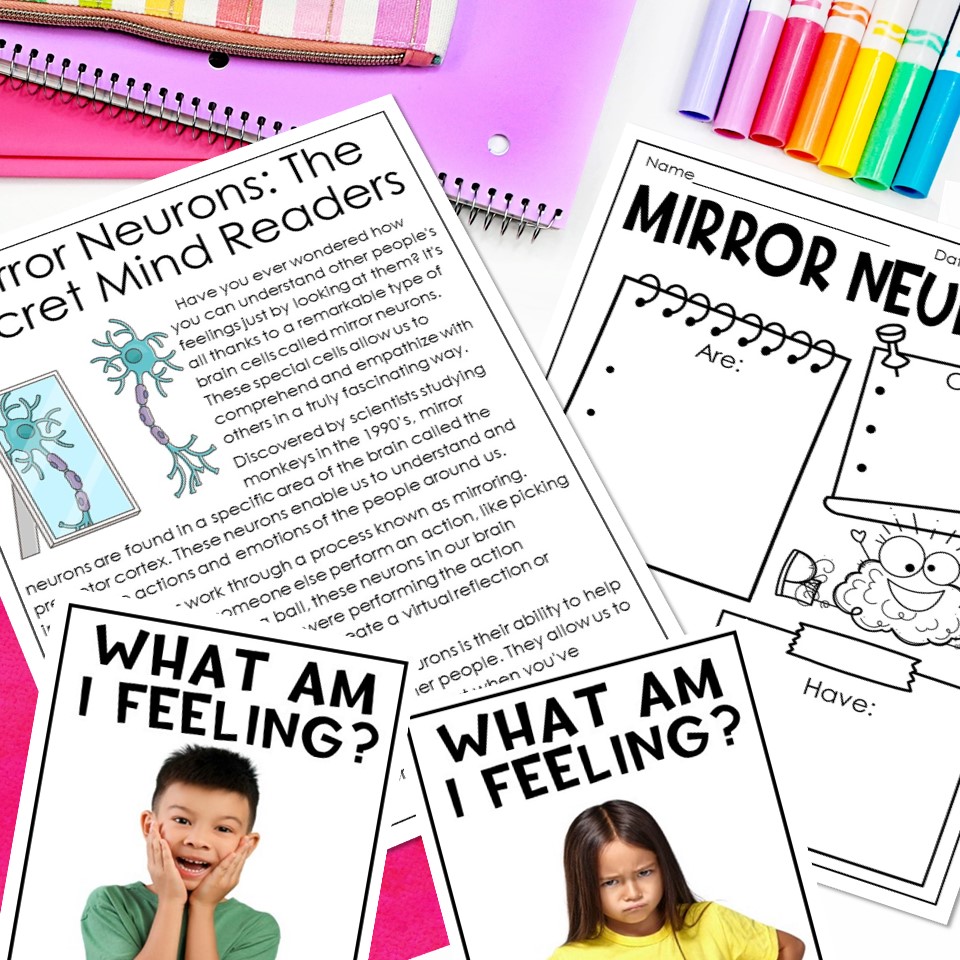
LESSON 5: The Role of the Brain in Emotions and Self-Regulation
The Limbic System is the epicenter of emotions. It is important for the kids to understand the different parts of this system, particularly the amygdala, which is the brain’s alarm system that alerts your body of potential threats. This is also a good opportunity to talk about self-regulation techniques and mindfulness exercises.

LESSON 6: The Concept of Neuroplasticity
Neuroplasticity is the core idea behind a growth mindset. Explain to students how their brain changes and grows when they learn new things. Use metaphors or analogies to make it relatable. For instance, you might compare the brain to a muscle that gets stronger with exercise. I like to do a simple activity where kids will get better with practice to demonstrate neuroplasticity.
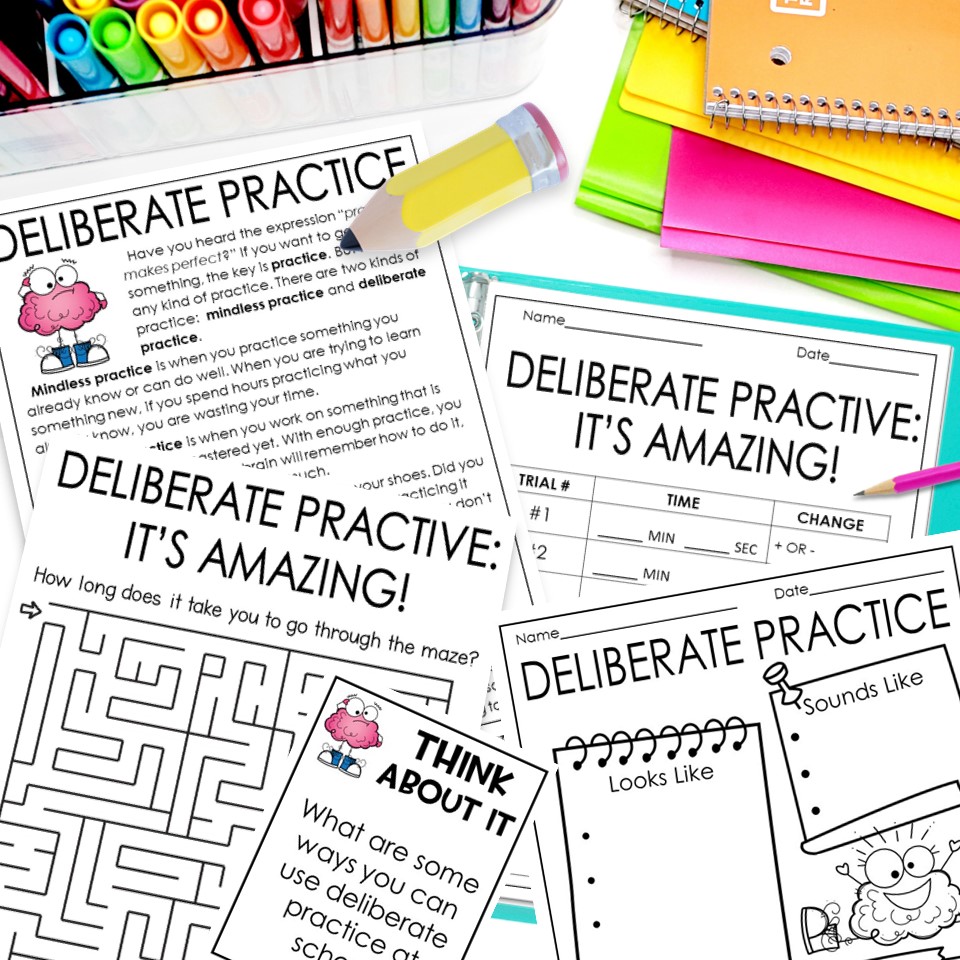
Your Fantastic Elastic Brain is a vibrant and engaging children’s book written by Dr. JoAnn Deak. This book delves into the wonders of the brain, making complex concepts accessible to young readers. One of its central themes is the idea of neuroplasticity which is an important concept when teaching brain science for kids. Through relatable examples and great visuals, the book teaches children that every time they learn something new or overcome challenges, they’re actually stretching and growing their brains.
LESSON 7: The Different Types of Memory
It’s important to teach kids the importance of memory and to understand the different types of memory, like long-term, short-term, and sensory memory. I like students to participate in a memory game where they are shown a tray of items, and you take one away. The student must decide which item was removed. Another way to do this activity is to just show the items for 60 seconds and then cover the tray. Ask the student to name all the items on the tray that they can remember.

One of my favorite books to share with students when we talk about memory is Wilfred Gordon McDonald Partridge by Mem Fox. It is the story of a boy who knows and likes all the old folks in the home next door. But his favorite person at the home is Miss Nancy Alison Delacourt Cooper because she has four names just like him. Learning that Miss Nancy has lost her memory, he asks the folks what a memory is. He gathers up objects that represent his own memories and shares them with Miss Nancy in hopes she’ll recover her memories.
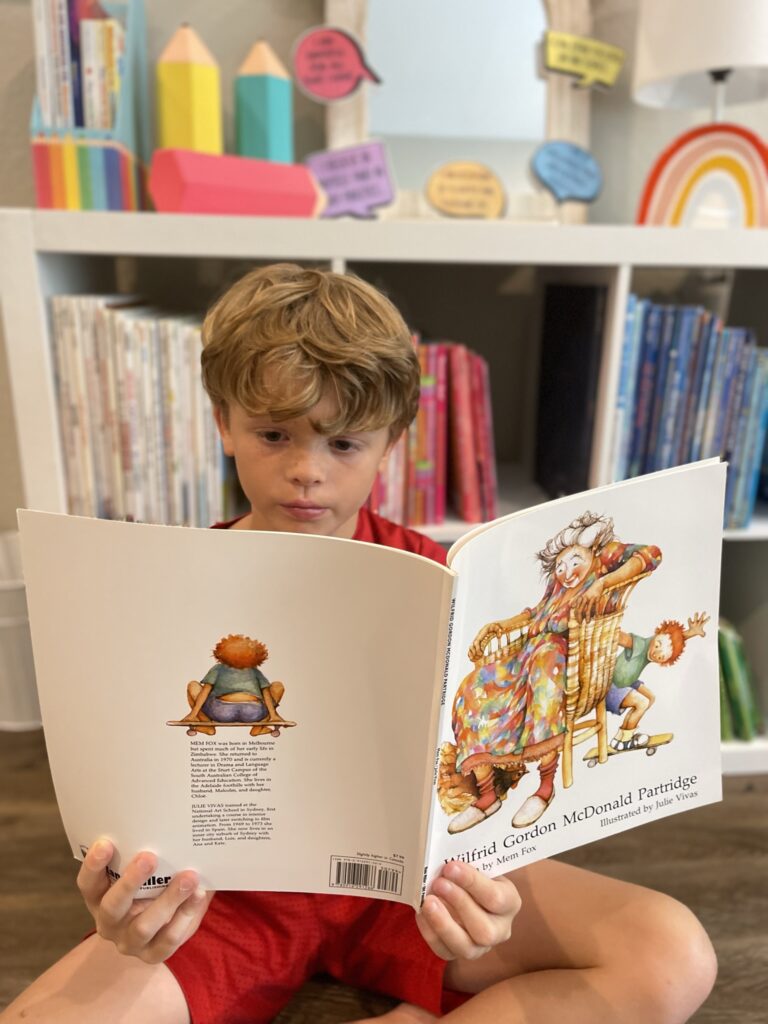
LESSON 8: The Effects of Sleep on the Brain
It is important for students to develop awareness of healthy sleep habits and strategies for improving sleep quality. They also need to identify the effects of inadequate sleep on cognitive abilities and learning. I like to have my students keep a sleep diary to see the effects of sleep on how their bodies and brains.
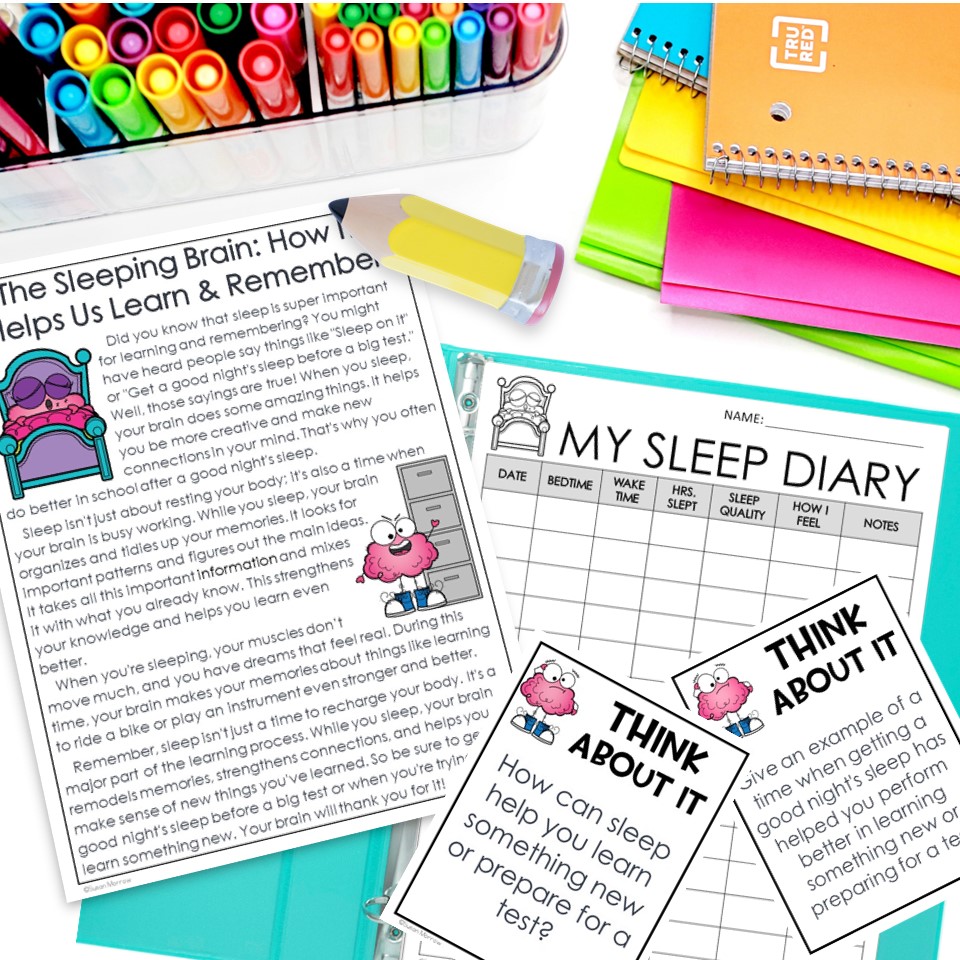
Good Night to Your Fantastic Elastic Brain teaches children about the importance of sleep in brain growth. The book explores how the brain continues its vital work during sleep, such as consolidating learning, resetting itself, and maintaining cleanliness. Packed with fascinating science and fun facts, this book will inspire kids to prioritize a good night’s rest for optimal brain health and development.
LESSON 9: Taking Care of Your Brain
It’s essential for students to understand that taking care of their brains involves more than just intellectual exercises. You need to stress the importance of good sleep, a balanced diet, and regular physical activity for brain health and optimal functioning. I like to have my students create a layered book about ways to take care of their brains.
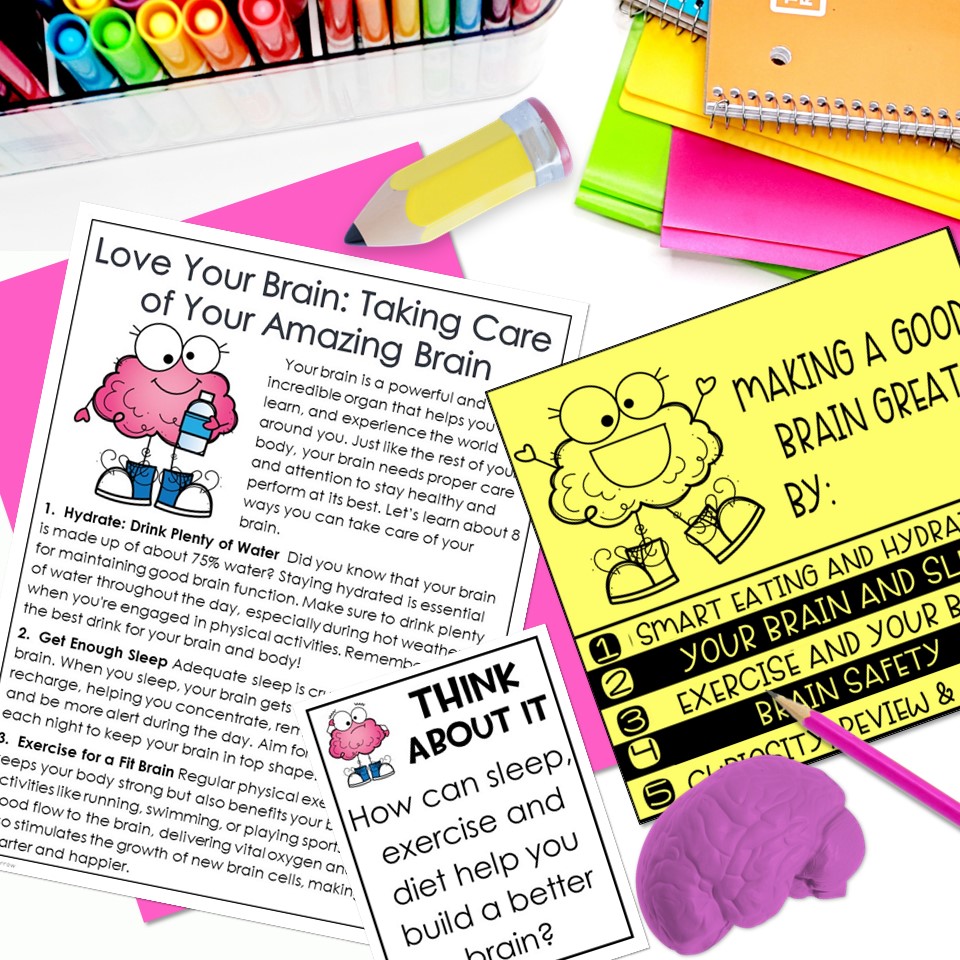
LESSON 10: Multiple Intelligences
I like to talk about different types of intelligence with my students. But please note, everyone has all 8 of the types of intelligence identified by Howard Gardner. His theory of intelligence is often misunderstood. Gardner’s theory has no connection to learning styles, even though many people get the two confused.
I want students to understand that there are different ways people can be smart. Everyone has all 8 of the intelligences, but we prefer some over the others. Learning about multiple intelligences helps students appreciate their own unique strengths and abilities and allows them to reflect on how they can use their intelligences in various aspects of life.

Including these topics in your brain unit can help elementary students grasp the essentials of brain science. Always encourage questions and foster their curiosity about the brain and how it works. Remember, the goal is not to make them neuroscientists, but to provide them with a basic understanding of their brains, thereby empowering them to take charge of their learning and growth.
I have created an in-depth unit on the brain which covers everything included in this blog post and more. If you are interested in learning more about this unit. You can check it out on my TpT store.

Brain Science for Kids: Skills and Strategies
Understanding the brain is not just a science lesson; it’s a doorway to cultivating essential life skills and learning strategies. As students learn about their brains and the science of learning, they also acquire practical skills that can help them become more effective learners and individuals. Here are some of the skills and strategies that a study of the brain can help cultivate:
- Cultivating a Growth Mindset: Teaching children about the malleability of the brain and the power of effort can help nurture a growth mindset. They’ll learn to replace the limiting belief of “I can’t do this” with the empowering understanding of “I can’t do this yet, but with effort and persistence, I can learn.”
- Emphasizing the Process of Learning: As students understand that struggling with a problem can lead to stronger brain connections, they learn to value the process of learning over the outcome. This shift in perspective can help reduce stress around performance and promote a more enjoyable and effective learning experience.
- Understanding and Managing Emotions: Learning about the brain’s role in emotions can help students develop emotional intelligence. They’ll learn to identify their emotions, understand what’s causing them, and develop strategies to manage them effectively, improving both their academic and social experiences.
- The Practice of Mindfulness and Focus: Understanding the effects of attention and focus on the brain can encourage students to practice mindfulness. Regular mindfulness practice can improve their focus, reduce stress, and enhance their learning capacity.
As educators, our goal is to prepare students for a lifetime of learning. Teaching brain science for kids should can provide students with essential skills and strategies to become active, resilient learners, ready to navigate the complexities of life and learning in the 21st century.

Tips for Teaching Brain Science For Kids
Teaching about the brain and neuroplasticity can seem daunting, given the complexity of the topic. However, with the right approach and resources, you can make these lessons engaging, relatable, and fun for your students. Here are some tips to guide you:
- Incorporating Hands-On Activities and Experiments: Learning about the brain becomes far more engaging when students can see, touch, and experience the concepts firsthand. Use models of the brain, conduct simple neuroscience experiments, or create neuron art projects. These hands-on activities can make the learning experience interactive and memorable.

- Using Analogies and Visuals to Explain Complex Concepts: Use familiar comparisons to explain complex brain concepts. For instance, you might liken the brain to a garden, where thoughts are seeds that grow into brain pathways. You can also use visual aids, such as diagrams, illustrations, and animated videos, to support understanding.
- Encouraging Questions and Fostering Curiosity: Create an environment where students feel free to ask questions about the brain and its workings. Encourage their curiosity and acknowledge their insights. The more they feel involved in the process, the more interested they’ll become.
- Relating Lessons to Real Life: Help students connect what they’re learning about the brain to their daily lives and experiences. Discuss the brain’s role when they’re learning to play a new game, practicing a musical instrument, or even when they’re experiencing powerful emotions.
- Host a Brain Awareness Event:
National Brain Awareness Week is a yearly holiday hosted by the Dana Foundation. It is held in March of each year. In my school system, the gifted specialists and their students hosted a yearly brain fair to teach brain science for kids during this holiday. Click on the image above to learn more about the activities and demonstrations we had during our Brain Awareness Fair.

Websites With Neuroscience Resources for Kids
- The Brain Resources for Teachers – Dana Foundation *my favorite – they also sponsor National Brain Awareness Week which is celebrated each March
- Neuroscience for Kids:
- Brain Basics: Know Your Brain:
- How the Senses Work With Your Brain and Nervous System
- Kids Health: Your Brain and Nervous System
- American Museum of Natural History: Brain For Kids
- Knowing Neurons
- BrainFacts.Org
- BrainU: Neuroscience for teachers and their students
BRAIN VIDEOS:
- Bill Nye The Science Guy – The Brain
- Brainworks videos for kids by the University of Washington
- How to Learn the Major Parts of the Brain Quickly

Final Thoughts
Remember, the goal of teaching brain science isn’t to turn your students into budding neuroscientists but to foster a deeper understanding of their own learning processes and capabilities. The more tangible and relatable you can make this subject, the more your students will appreciate and benefit from these invaluable lessons.
PIN FOR LATER

